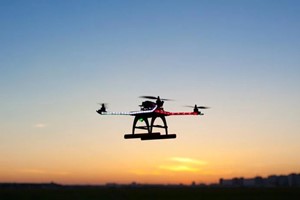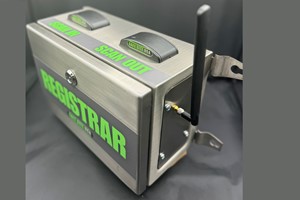With so many effective safety solutions available on the market, why do falls from height continue to take such a heavy toll on workers? Alfonso Fernandez of MSA Safety takes a look at common issues around the use of PPE, and how to avoid making mistakes.
A recent report1 from the United States by CPWR (Center for Construction Research and Training) highlights that falls from height are the leading cause of construction worker deaths, with 353 fatalities in 2020 alone.
Similar concerns apply globally. In the Middle East, problems continue despite strong commitment and major investment toward enhancing safety. Here, there is a hunger for raising standards in line with the rapid advances businesses are making in this region’s industrial development and construction sectors.
In the CPWR study, it states that more than half of primary causes of falls come down to three reasons:
Equipment provided but not used
People who regularly work at heights can easily become complacent about the risks. To help avoid complacency, employers can regularly remind their employees of the hazards present, the protective measures they should take, and the PPE and other safety equipment available to help protect against these risks. This message can be broadcast in the workplace and across industries.
Comprehensive hands-on training courses, repeated at intervals, are an excellent way to communicate this message. Between these intervals, you can reinforce the message in other ways. Regular ‘toolbox talks’ are one approach. As an extension of this, MSA has a PPE demonstration vehicle equipped to make safety presentations. You can also use networking discussions, meetings and events to encourage sharing of information and experience between teams.
Aim to develop a culture of safety in your company. CPWR1 found that employees were eight times more likely to use fall protection equipment if they believed it was required by their employer. Thus, to help increase fall protection equipment usage by your employees, you can make usage a requirement - and you should be prepared to supervise and enforce such usage.
To help ensure that your employees comply with your company’s requirements to wear fall protection equipment, you should consider buying equipment, that they will want to wear. PPE products should fit well, whatever the wearer’s size and shape, feel comfortable, give a professional appearance, and be easy to use.
Incorrect PPE provided, equipment not used properly
You may have the appropriate equipment, but the worker may not know how to use it. Or in some instances, PPE that is not appropriate for the applicable situation may be incorrectly specified.
Be clear on what you need the product for, so you can select one with the right specification. This should include a site survey and risk assessment, taking into account the local area’s characteristics and specific features. If a risk is not correctly identified, your chosen equipment may be unsuitable for the specific situation or may be deployed improperly. Identifying risks in complex worksites is more effective when done by experts who see these risks, day in day out.
In the CPWR1 survey, employees wearing improper fall protection equipment that was not appropriate for the specific situation were four times more likely to experience a fatal fall. If you have selected the wrong equipment, it may not give the protection your workers need. Checking its markings for compliance with legal requirements is just the start. Verify that it complies with the necessary standards for your specific application, location and circumstances. And look for products that go beyond the legal minimum standard. Ease of use is desirable. You should consider user-friendliness when buying safety equipment. Also consider buying versatile products which can provide protection for different work situations.
Remember that equipment should be routinely checked, inspected, serviced, maintained and repaired in accordance with the manufacturer’s recommendations. Without these safeguards, it may become unfit for use.
Proper training not provided
Fall protection training is recommended for everyone who works at height - and this training should be repeated at regular intervals. Training can be a problem in the Middle East region, as work locations are often very remote. The need for extensive travel time, regional knowledge and organisation of visitor permits tends to limit the number of training providers available. These difficulties must be overcome, as training helps enhance safety.
Amongst the training-related findings in the CPWR1 survey is the statistic that falls were 76% less likely to be fatal if the worker had received self-rescue training prior to experiencing the fall. Those who avoided fatal falls were also more likely to have received equipment training from the vendor and/or manufacturer or from a Competent Person (someone who has professional and practical expertise in fall safety, who can identify hazards and who is authorized to take action to eliminate risks).
Other training topics, including rescue planning, equipment inspection, site survey and hazard assessment, can also be provided as part of a comprehensive training programme.
Training programmes should be hands-on in nature and should be tailored to address the specific needs of the participants. Their content should deal with the location and circumstances in which the participants work, the height challenges they face, and the nature of their jobs.
To summarize…
If you put suitable fall prevention equipment and practices in place, you can help to prevent a worker from becoming a fall statistic. Excellent choices of equipment and solutions exist in the market. Assess what equipment is needed for each task, site and set of circumstances; choose the appropriate products and product combinations and train your people in the proper use of these products. Above all, nurture a culture of safety in which they will be happy to use that equipment every day.














